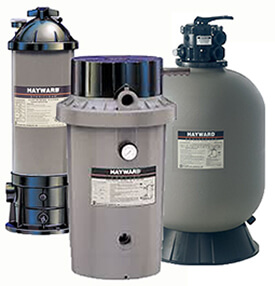
Spring rains have subsided, lawns and gardens have been the primary focus of attention. The garage is even getting somewhat organized, and as the days start to finally promise some consecutive sunshine you turn to the last but not least most important thing in the yard that’s often the final spring project for many homeowners: the swimming pool!
Some folks are lucky. The pump primes right up, water circulates, there are no leaks, and they are off to good start. For others, a common fate is shared as they open to a non-working pump, cracked or damaged filters, or just now remember the previous season’s struggle with a filter system that was just not doing the job anymore.
If you are still struggling to clear the pool water, here’s information that can be useful to you, our Beginner’s Guide to Pool Filters.
Filtration, Filtration, Filtration
To help you comprehend, I first must exude a pool pro’s wisdom with the mantra: “Filtration, filtration, filtration!” as this is the true secret to keeping a pool clear!
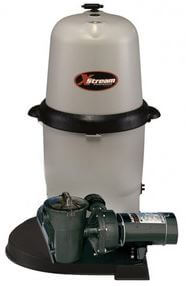
The pump and filter system is the heart of your pool and it does most of the cleaning and clarifying, so make sure it’s functioning well and sized properly.
There are a variety of filter brands and models for every size pool, in-ground and aboveground alike. Some great brands are Hayward, Pentair, Jandy, and Waterway and they are sold as filter only or as a system with a pump.
Aboveground systems usually include hoses and fittings, a pump, and base so they are a “plug and play” purchase. For smaller pools and soft-sided pools there are some nice products from Intex and GAME that are easy on the budget, too.
Generally, they all carry similar warranties and have the same basic features and functions. You just need to place your faith in a brand and go for it like you would if you were choosing any other household appliance like a new stove.
What I have found is that most folks replace their old one with the same type and/or brand that was there when they bought the home, buy the same kind their parents had, or take a tip from a friend or neighbor. By the way, your pump and filter can be different brands, no problem there.
A good source of pool filter advice (outside of mine) would be to ask any one of these people, read some good pool blogs, manufacturer sites, and/or read some real reviews on line.
So let’s dive into the details of the three main types of swimming pool filters, sand, cartridge, and DE, and distill some differences.
SAND FILTERS
A sand filter is comprises a hollow tank on a stand with a simple vertical PVC pipe stand in the center that extends to the bottom and is fitted into a manifold with slotted lateral pipes extending in a fanned out fashion looking much like wagon wheel spokes on an axle tipped on end.
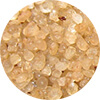
Sand filters are filled with, you guessed it, sand, but not just any sand. You can fill it with a Pool Filter Sand, (#20 grade silica sand for pools at $4.99-$9.99/50 lbs.), Zeolite (a premium high porosity filter media at $39.99/50 lbs.), or Filter Glass (recycled crushed glass that actually filters out blood cells and entraps cryptosporidium at $44.99/50 lbs.).
Traditionally, Sand Filters are filled 2/3 full and a handy multiport valve sits on top with an O-ring and a clamp band to seal and secure the valve to the filter. The multiport valve allows you to control all of the filter functions externally.

Note that variable valves vary. Try to say that 10 times in a row! Some models have a threaded top mount valve or a side-mounted one that is fixed to the side of the tank via two bulkhead unions. They can have 1.5-inch ports or have 2″ ports.
Multiport valves, also used on DE filters, typically have six positions but can have from four to eight. They are set to “filter” mode most of the time. You can use the valve to recirculate, vacuuming to waste, or to drop your water level for closing. Check your owner’s manual for full functionality and closing recommendations.
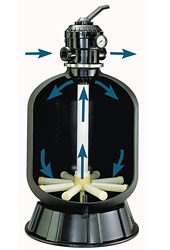
How it all works: Water flows through the valve and diffuser, passes through the sand bed, which captures fine debris particulates, and travels through the slotted laterals up through the standpipe and goes back to the pool.
As the sand bed slowly plugs up, your pressure gauge, located on the valve (or dome for side mounts) will rise in pressure. Keep in mind that the more a sand filter plugs up, the finer the particulates that are captured so it’s good to let it plug up somewhat, and not backwash too frequently.
Normal operating pressure depends on your pump size and overall resistance in the system, but most residential tanks will start at between 10-20 psi and when the pressure rises 8-10 pounds, it is time to backwash the filter.
To backwash a sand filter, cut the power to the pump and reverse the valve, then turn the pump back on. The water flows in reverse and dirty water is sent out another port on the valve, where you will have attached a backwash hose with a clamp and flushed to the lawn, or wherever your backwash hose may lead.
Just make sure it goes away from the pool and, if heavily chlorinated, away from any flowers or gardens. It is best to do this when your chlorine or sanitizer is low so you don’t waste it! Flushing for two minutes or so should do it or you can watch the discharge water or sight glass on the valve until the water runs clear. Shut the pump off and return the valve to filter mode.
Sand will filter down to about 20 microns (1 micron is equal to 10-100 human hair widths) and should be replaced every three to five years. Smaller tanks may be emptied at the end of the season so it is easy to store away the filter and then replaced with fresh sand each spring. Winterizing involves a heavy backwash then simply draining the tank by unscrewing a plug at the bottom and putting the valve in “winterize” position to drain the valve itself.
You will know the filter is working if the water pressure coming into the pool is strong, the pump basket housing is always full of water, the gauge pressure is normal, and the pool water stays clear.
Top Mount Sand Filters vs. Side Mount Sand Filters
Top mounted sand filters are always sold with a multiport valve that is flange attached to the top of the filter tank. Top mount sand filters also include all internals (standpipe, hub, laterals), and the drain assembly. Top mount sand filters are cheaper for manufacturers to make, because the top-mount design is simpler, and much fewer parts are used.
- Top mounted multiport valve can be rotated to align with pump and other equipment.
- Lower cost filters; from reduced cost of manufacturing top mount sand filters.
- Fewer parts than side mounted tanks; no bulkheads or top closure assembly.
Side mounted sand filters are sold separately from the valve, a multiport or slide valve, primarily because you have a choice. A slide valve (aka push-pull valve) offers only two functions, filter or backwash, but can be preferred because of (much) lower resistance than a multiport valve, and because the simple design requires fewer repairs.
- Side mount filters are NSF certified for commercial pools to NSF/ANSI Standard 50.
- Side mount filters can use a slide valve for higher flow rates and reduced restriction.
- Side mount filters provide easier access to inspect sand and service internal parts.
Sand Bed Rejuvenation: You can clean your sand or zeolite with a quart of Filter Sand cleaner to disinfect the media, decalcify, and rejuvenate the bed.
Filter Sand Change: To empty or change the sand you simply disconnect the hoses or PVC, remove the valve, and carefully remove scoop by scoop with a coffee mug or soup can. When you’ve removed most of the sand, the standpipe and lateral assembly can be folded up or unscrewed and removed so that you can use a bigger scoop and eventually tip over the tank and rinse it out. Then replace the inner components, center and cover the pipe so sand does not get in it, add enough water to cover the laterals, and replace with new sand. Remove the cover, clamp on the valve and you are good to go!
Sand Filter Parts: Commonly replaced filter parts would include drain assembly parts or laterals. Sand filters have very few parts, which make them simpler to work on than DE filters.
CARTRIDGE POOL FILTERS
For those who want more simplicity than the aforementioned filtration apparatus, and a worry-free setup, the cartridge filter may the way to go! This style of filter has taken the aboveground market by storm due to its simple design and ease of use.

Many cartridge filters are tall and narrow so they save on space and, unlike sand, the filter is a simple two-piece tank (lid and bottom). They use a spun, bonded polyester, fan folded filter much like a cylindrical automotive air filter.
Cartridge filters have the most available filter surface area, ranging from 50-500 square feet. The cartridge has less resistance so you get more turnover in gallons over the same horsepower with sand, with less strain on your pump. This also means you can run it for fewer hours and save electricity and money! Some filter cartridges are also available in an antimicrobial version: Microban.
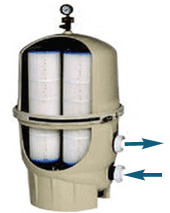
Here’s how they work: Water is pushed into the filter tank from your pump and flows through the filter membrane. Fine particles and debris are trapped in the fabric and clean water returns back to the pool. A gauge on top lets you know when it’s time to clean.
When the pressure swings up 10 points or so it is time to remove the cartridge and you just hose it down. No backwashing means you save on heated and chemically treated water too, although you do have to spend some time if you want to really deep clean between the pleats. There are also some nice tools you can buy that fit on your garden hose just for this.
A cartridge filter tank comes apart with a belly clamp or knob on the top. For aboveground pool owners, be sure to close off the skimmer and return jets before you open the tank or you will have a water gusher. Some systems come with shut off valves to prevent this or you can add them yourself. Slice, gate, or ball valves work great.
Cartridge Rejuvenation: Occasionally, the cartridge needs more than a hosing. Soak it overnight in a large bucket of water and cartridge cleaner. If your bucket is not deep enough, just flip the filter over and repeat. Filter cleaners can restore the cartridge to its original white condition, and remove oils and mineral deposits.
Cartridge Replacement: The cartridge will last for one to three seasons depending on how many hours of use and how much cleaning it must do, but eventually they become fuzzy, the support straps break, and they either collapse or just get too stained and dirty to keep clean.
Many folks buy a new cartridge every few years and keep the old one just for spring cleanup. Replacing a cartridge is a back saver and much easier than all that sand! Replacement filters average about 75 cents a square foot and are easy to find on line or in most pool stores.
Cartridge Filter Parts: Commonly replaced parts include the tank lid O-ring, gauge, and cartridges. Since there is no multiport valve, cartridge filters often need the least amount of repair parts of all filter types.
DE POOL FILTERS
And in the spirit of saving the best for last, we have the Diatomaceous Earth filter! If you can’t pronounce it you can just call it DE!

DE powder is a fine natural powder composed of the fossilized exoskeletons of tiny diatoms that once thrived in the sea and are now layered underground. DE particles are hollow with high porosity so they make an excellent filter media.
Grids are held in place by a top and bottom manifold while the fingers are sandwiched between two pressure plates and a diaphragm gasket that allows the tubes to be shaken, but not stirred (haha, couldn’t resist that one!).
The amount of available filter area for DE filters falls between sand and cartridge from 24-60 square feet. Your manual will tell you how much DE to add based on the mode, which is normally 1 pound of DE for each 5 square feet of filter area.
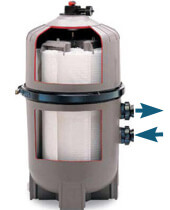
Here’s how they work: Sprinkle the powder into your skimmer, which draws it into the filter and coats either fabric coated grids or a cluster of “fingers” with a fine layered top coat. A pound of DE goes for about $1.00 and is usually sold in 25 lb. bags.
DE powder is fine enough to let water pass through but almost nothing else! By using a DE filter you filter down below 5 microns and actually achieve a whole different level of water clarity: crystal clear water. But there is a downside in that spring startup can be a chore because the media is so fine it plugs up quickly and regularly and you will go through a good supply of DE if your pool is quite dirty or has experienced an algae bloom.
But let it be known that these trusty filters are designed for this and you simply bump and shake the debris from the fingers with the top mounted bump handle on most models or use the multiport valve on the grid style filters to just backwash out the collected debris. Either way it gets flushed away through a valve at the bottom of the tank or backwash hose, and you can re-add DE to the skimmer and the cycle starts over again.
DE Filter Rejuvenation: DE filter grids and fingers need periodic soaking just like a cartridge, especially in cases where the water is hard and the pores can calcify. DE filter cleaner is readily available to remedy this and the components are accessible by loosening a belly ring or unbolting the lid and separating the top half of the tank from the bottom. Again, shut-off valves are helpful for above ground cleanouts whereas in ground equipment owners should have no worries unless the top of the tank is situated below the pool water level. Grids and finger “nests” can be soaked overnight in a pail with the cleaner, then rinsed with a hose and replaced in the tank.
DE Grid Replacement: Grids can last up to 10 years, but eventually they may become ripped and torn, or the plastic beneath the fabric can break. Of all filter types, however, DE filter media can be the longest lasting.
DE Filter Parts: Common replacement parts are E-clips, O-rings, gauge, tank O-ring, and over time you may need to replace filter grids or fingers. DE filters have the most parts of all filter types, so may require a few extra repairs.
DO I NEED A NEW FILTER?
Start with your eyes and ears. If the pump is whining, grinding, corroded, or sucking air and your filter is leaking at the ports, just not keeping the pool clear, or it looks physically worn, it may be time for a new one. If a pump lasts 10 years, that is excellent!
A filter tank can theoretically last forever, but chemicals, weather, UV rays, and age can take its toll. If you can keep your equipment covered or surrounded by a wall, that is the best way to protect your investment. My system is next to the garage and we added a simple roof on two supports so we have had the same filter (tank) since 1979! I’ve replaced the filter media many times, however.
Some filters are woefully undersized. If you are cleaning your filter more than once per month, it may be too small for your pool. If you have frequent battles with algae, cloudy water or difficulty managing water clarity, your filter could be too small or the filter media inside has become tired and needs replacement.
FINAL THOUGHTS
It would seem that the good old sand filter is easy enough to use with external controls and contains just a few parts. Operation is a snap when all you do is move a valve handle, and if you use the 20 grade silica sand, it is inexpensive but some work to change. Performance is good and you have just a few wear and tear parts with the valve itself.
The cartridge filter has the least amount of parts and is the second best method of filtration. The negative is the cost of replacing the cartridge and cleaning between the all those pleats can be tedious. But it’s a no-brainer how easy it is to use when you just plop in a cartridge and let it go!
DE filters, although they outclass the rest for producing sparkling clear water, are laden with parts, can be tedious and frustrating at startup, and let’s not forget that you must buy, store, and handle the DE powder. But that’s the price you pay for that over-the-top sparkling water clarity and for some it’s worth it!

No matter which type of filter you buy, here’s a few maintenance tips that should not be ignored. Always lube your O-rings in the spring with pool O-ring lube, use Teflon tape on threaded fittings. At the end of the season, give your sand filter media, grids or fingers, and cartridges a good cleaning and be sure to remove all drain plugs when winterizing.
Using shut-off valves and unions between your various pieces of pool equipment. It makes cleaning, servicing, and replacement a snap!
Whichever filter you decide is best for you and your pool. A new “heart” for your system may be just the breath of fresh life your pool needs. All three filter types are in use in someone’s yard today — tried-and-true methods of keeping a pool clean and clear so you can spend your time swimming and enjoying your pool.


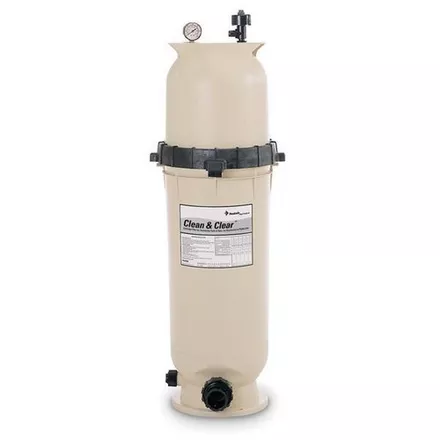
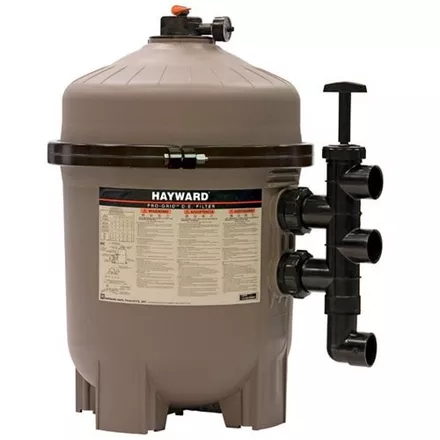
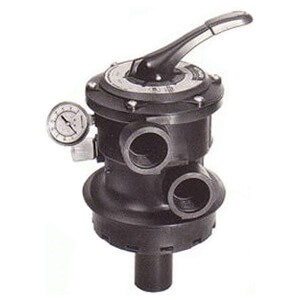
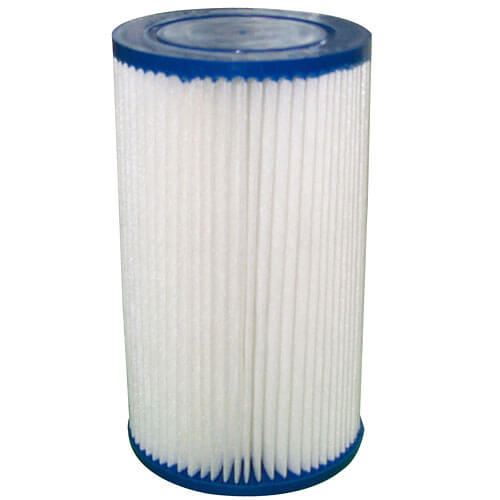
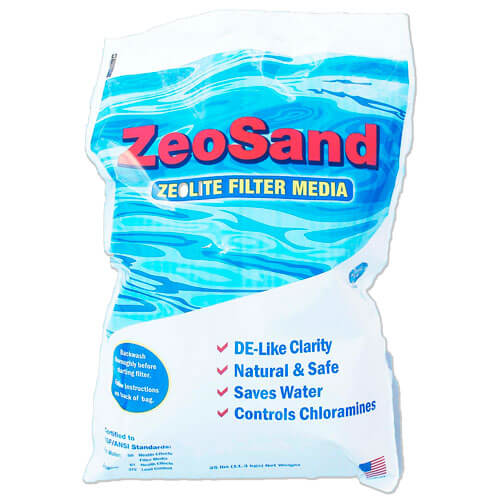
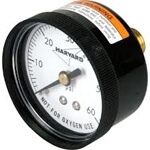
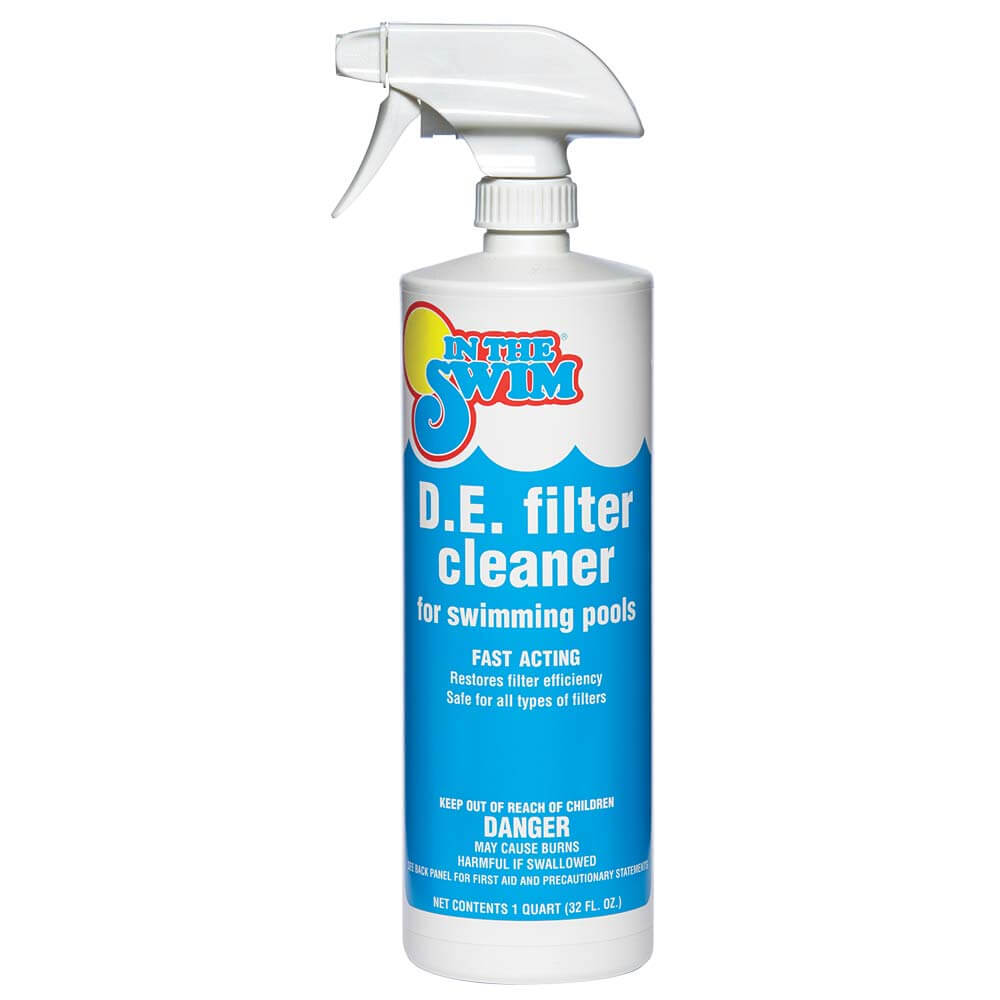
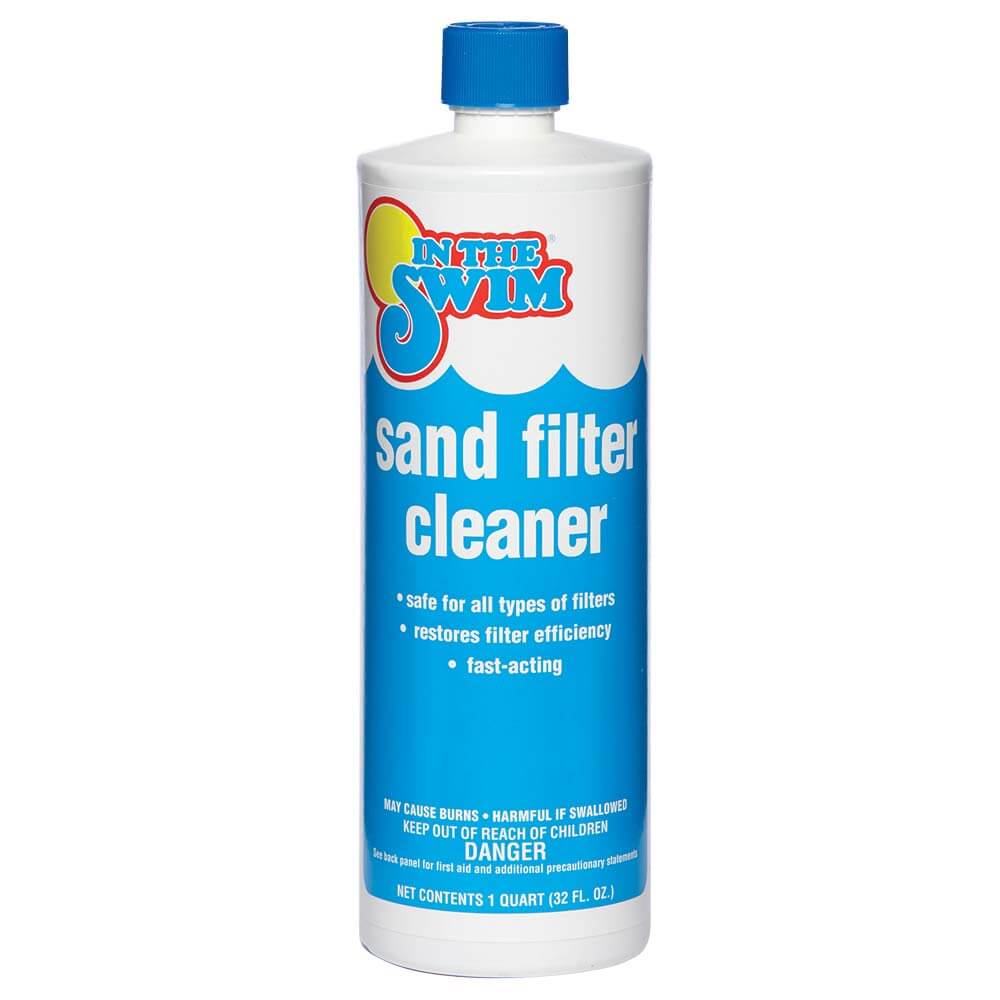
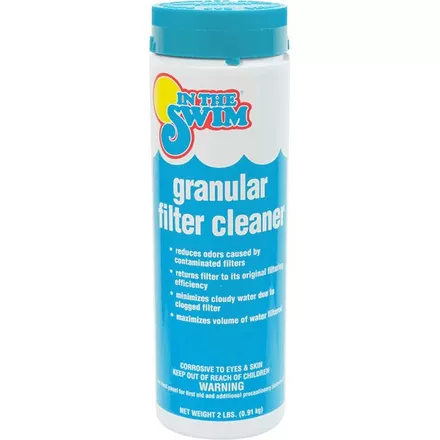
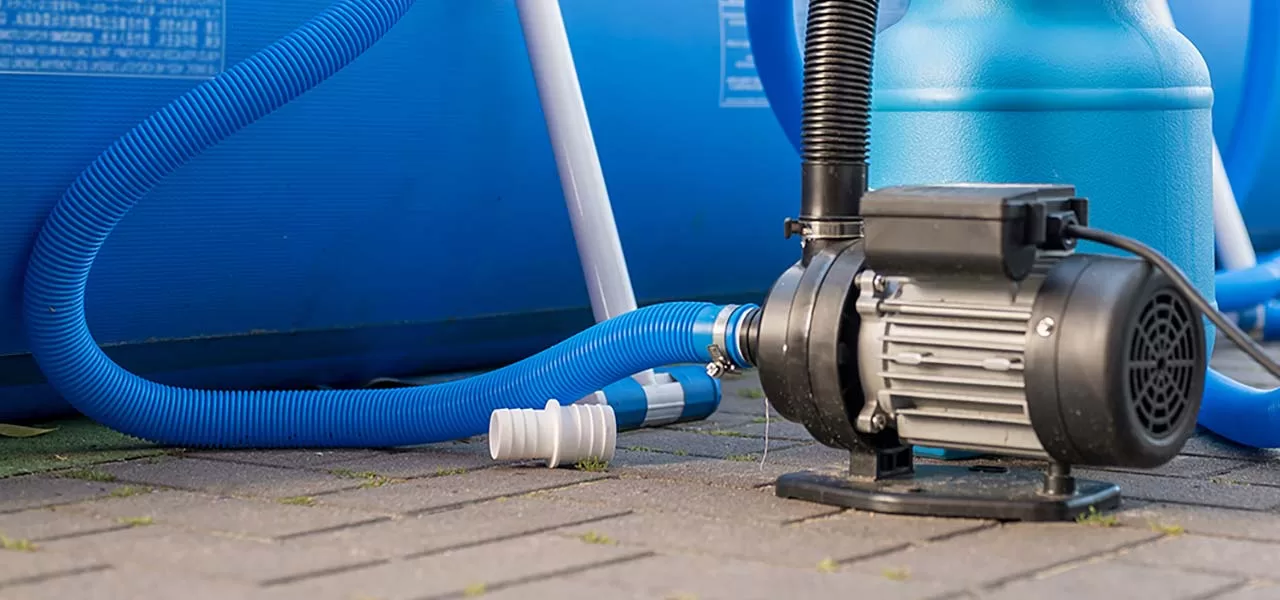
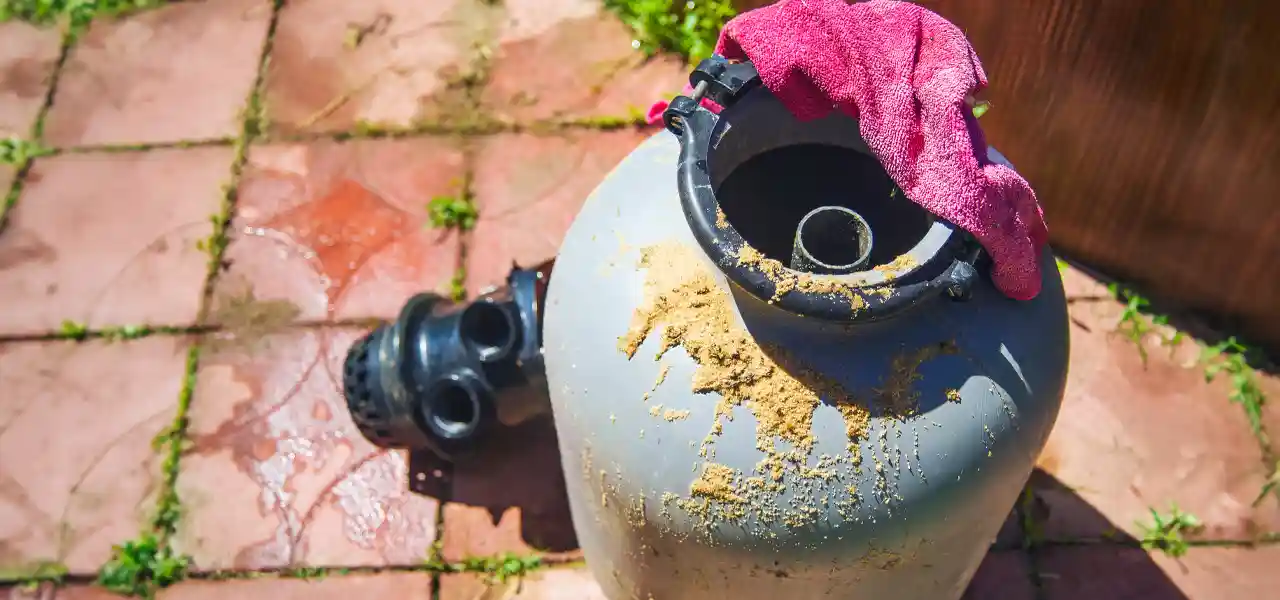
I have a 25′ above ground pool with a sand filter. However… The weather has destroyed the label on the valve position indicator… I assume the valve is in filter mode but how do I know for sure and how do I get a new label? (Or, at least how do I know what the other positions are?)
david, backwash will be 180 degrees from filter. The others, that depeds on what valve you have. If you know the valve you have, you can usually find replacement labels. Or you can find out the naming, and use a magic marker to mark with big letters like F for Filter and B for backwash…
Davy
I did try it 180° from filter (which I assume is where the valve is now) and it did “puke” out some pine needles but it seemed to dump some sand too so I quickly shut off the pump.
Is it normal to lose some sand in backwash mode? I moved into this house in March of this year and dont know how much sand is in there.
Dacid
David, a sand filter can release a small amount of sand during backwashing, but if it is handfuls of sand, then there is likely a problem such as a cracked lateral. Don’t delay too long in figuring this out, or your pool will go green.
HI, I am new to owning a pool that any bigger than a kiddie pool. I bought the Coleman 18×48, which comes with a small cartridge pump. I would like to get something bigger and more powerful to run a pool cleaner. It seems that all Sand filter systems e.g. Hayward 16″ 1hp pump are on backorder. Can I just buy a pump and filter separately and not as a combo? For instance Hayward 16″ sand filter and 115V 1 hp pump?
Lenka, yes you could use a separate pump and filter, just be sure they are matched up in flow. For the 16″ hayward filter, a 1 hp (or 3/4 hp) can be used.
I just bought a 22’*52″ Coleman pool that came with pump….can I add a Hayward sand filter to it?
Hi Jennifer, yes for that size pool there are many good choices. Hayward is a good choice, but we no longer have a 16″ filter system in Hayward. We do have the Pentair Sand Dollar system, or the 18″ Raypak Protege filter system, would be another good choice. Another one could be the Intex 16″ sand filter. Dont’ wait, systems like these are selling out fast!
How do you drain an in ground pool using a Hayward Pro Series Filter with a multi port valve. There is no setting that says winterize.
Hi there, if by drain the pool, you mean to lower the water level a few inches below the skimmer, you can use the Drain to Waste setting on the multiport. When the water level nears the bottom of the skimmer however, you will have to close the skimmer valve and lower water using only the main drain pipe, so the skimmer does not draw air into the pump. If you have no separate valve for the main drain, you may have to use a submersible pump, or start a siphon, if you have a nearby hill. Our newest blog post may be of some help with ways to lower water with a ‘combo’ skimmer >>> https://blog.intheswim.com/inground-pool-skimmer-plumbing-diagrams/
there is a dial on the timer box that is freeze control or something. It has 35 – 45 degrees on it an the dial is set @ 40. Our ambient temperature is 40-45 and my system is not shutting off according to the timer. Is this an auto freeze protection?
Hi Grant, yes that sounds like what it is – to turn the pump on at 40° F, to prevent freeze damage. Of course, water wont’ freeze until 32°, and even then it takes a few hours to freeze, and may require 31° actual temp to freeze hard enough beyond a slush, to do any harm to the equipment. You can adjust it down to 35°, it sounds like – which should allow the pump to shut off, until the sensor detects 35 degrees, at which point the pump will run non-stop. The sensor could also be out of calibration, as they may not be perfectly sensing the temperature. The freeze sensor can be replaced if needed.
Hi, this may be one of the oddest question ever asked but I am a new pool owner. We have a dual speed pump with a 22″ sand filter, multi valve port. When I change my port setting I have water gush out of the backwash hose but it stops as soon as I lock my new setting in. Is this suppose to happen?? Just seems like a lot of water waste each time I want to change the pump setting. It only comes out when I press my lever down and change my setting but it’s still a small gush. My husband says this is normal but I think it’s wasteful. Haha he is a plumber and normally I would not question him but pool pumps are not a common call that he gets. So it has been very difficult for me to let this one go. I just want to make sure our equipment is running properly. Thank you
Hi Jan, be sure to always shut the pump off before turning the backwash valve. If your filter system is below water level (aboveground pool?) this may happen normally. Hubby could install a cheap valve on the backwash line to avoid this, but you would have to remember to open it up before backwashing
I have a sand filter and my water is still cloudy someone told me if I don’t have enough sand in the filter it will not filter right don’t know if there is enough had someone put new sand in but screwed that up HELP
Anita, yes pool filters do need the correct amount of sand to operate correctly, typically this is about 2/3 full, but check your owners manual to be sure of the correct amount. Cloudy water could also be the result of poor water balance and/or low chlorine levels. Sand filters are not the best type of filter anyway – even when they are working correctly, and may pass small particles. Using a clarifier can help, or you can use a cup of Dicalite as a filter aid, or attach a Slime Bag to the pool return.
I have this plug for a in ground hayward pro series pool filter that I cant find a place for
Hi John, pool filters typically have a single 1.5″ threaded drain plug, located on the bottom of the tank – on the back side for cartridge and DE filters, usually. Hayward sand filters usually use a threaded CAP, not a plug. If you still can’t find it – turn on the pump – you’ll find it quickly!
I currently have a Hayward EC-50 DE filter for an above ground 18ft round pool, which needs to be replaced. Also changing pool liner. Pool guy is pushing Premium Blue 150 filter cartridge. He says Towns are starting to require it for environmental reasons. What should I do?
Hi Glen, some towns may restrict use of DE filters, because the powder could choke out small streams, or create problems for insects. IF your town does restrict it, the dept of building and zoning would have the information, you can probably google it if it exists. Most towns in the US are NOT restricting the use of DE filters. IF you are happy with the performance of the Perflex filter on your pool, I see no reason to switch. IF you did want to switch, 150 SF cartridge filter would be a good size for your pool. Premium Blue is made by Waterway, and replacement parts should be available.
I have a cartridge-type pool filter. It’s tall and I was interested in positioning it on its side during normal use – of course I’d construct a cradle for this. Is this possible?
Hi John, I have never seen a pool filter installed sideways before… I suppose it could work if held stationary – you’d might better contact the manufacturer and ask – I would be interested to know their answer, and if no – why not?
I have a sand filter. After about 30 minutes of running the water builds up in the clear dome of the filter and it can no longer be seen to “fountain”. If I release the little white plug it will reduce in level and work but only for another 30 minutes or so. What can this be and what can I do to remedy it please?
Sharon
hi, that’s normal, it’s not supposed to fountain, but fill the entire tank with water (and no air).
Good afternoon, I just replaced my four cartridge filters and I’m wanting to know is there a top or bottom to the cartridges.
Hi Bob, on most filter cartridges, No, it makes no difference, unless it is printed on the top rim “TOP”, which is the case with certain cartridges. But when both openings are identical on both ends, it does not matter how they are installed. Good question…
my pool has on shut off valves that came with it can you get valves for 1 1/4 no screw but slip on valves
Hi Ray, we carry a 1.5″ shut off valve, slip x slip, which you could use with two 1.5 x 1.25 slip x slip reducer bushings, (which we don’t sell, but any good hardware store will have). You can also find 1.25″ sxs ball valves that can be used, but we don’t carry one. But there too, any good hardware store would have what you need.
my local pool dealer is pushing a water clear 11 150 1 1/2 hp on my purchase of a new pool. I can find any information on water filter system. All I see is hayward pentair or janny should I take this filter or pay them more money to upgrade this filter. This is my first pool purchase I have no experience at all. My wife pick out a contempra 18 x 54 round. I need to know if I should stick with his package or get a better filtration system He going to charge us 350 for the upgrade or should I be comfortable with waterway for stater
Waterway makes some good equipment for aboveground pools. The Clearwater II 150 would be an especially good choice. And you can get parts for Waterway filters, although not carried by as many dealers as Hayward or Pentair. Definitely you want some kind of upgrade to the basic filter system, because they always stink, undersized and underperforming.